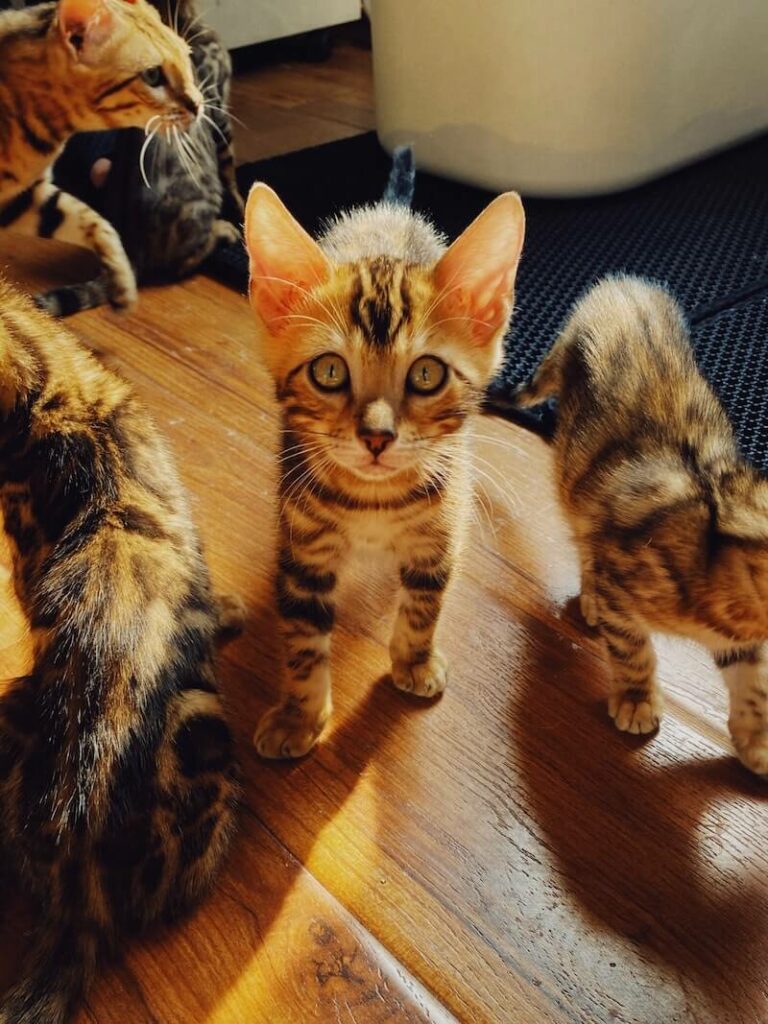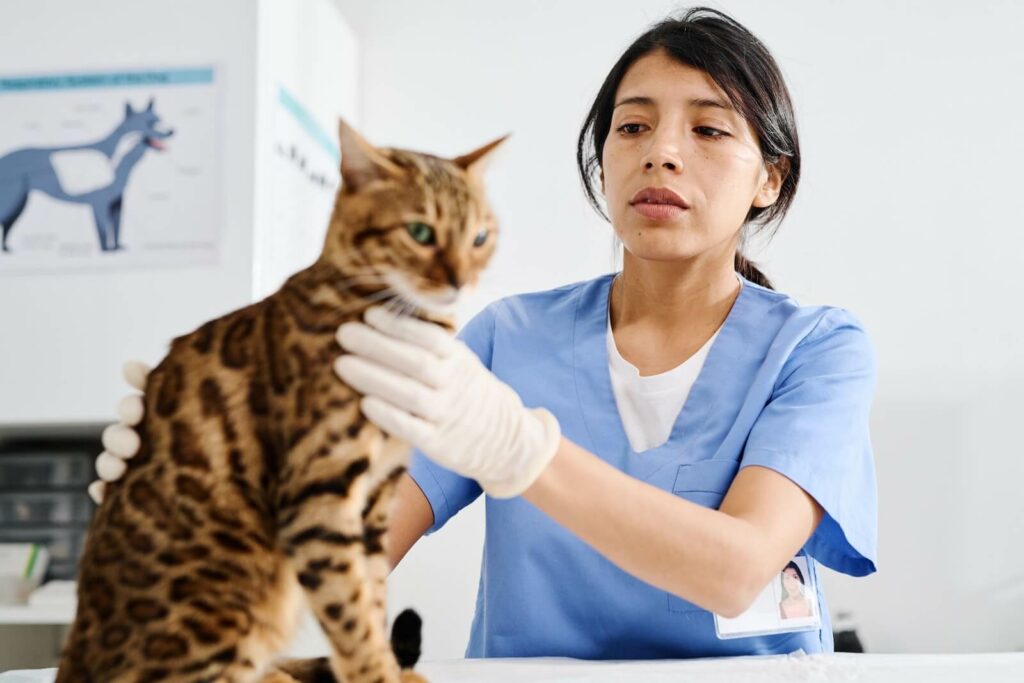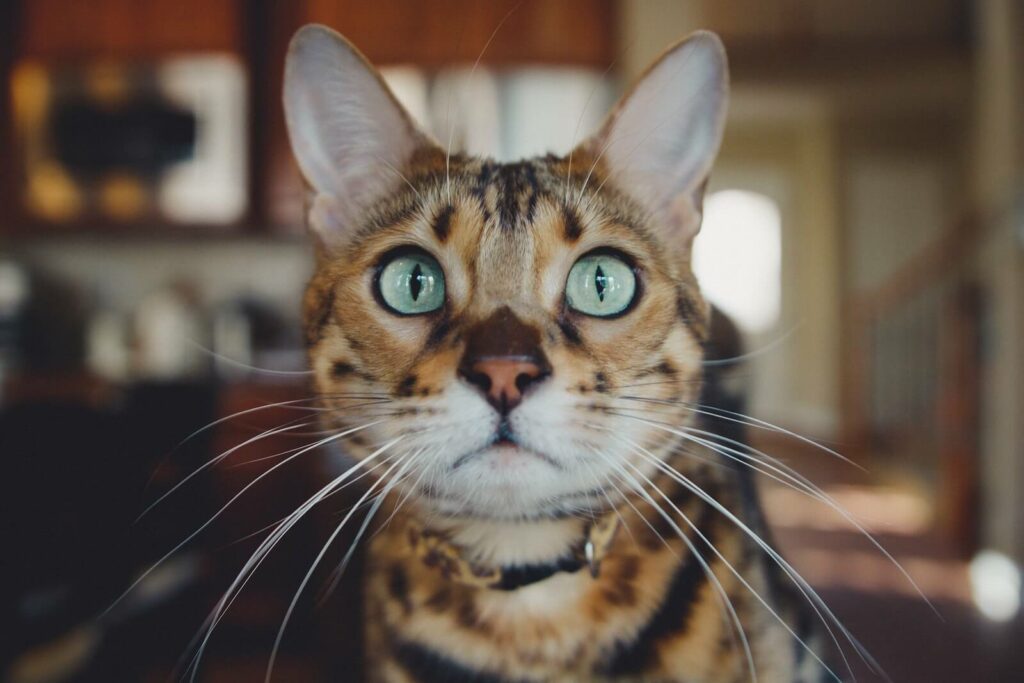Are you excited about adopting a Bengal cat? And who wouldn’t be? Bengals are beautiful cats. Bengal cats are a hybrid between a domestic feline and a leopard cat, a small wild cat native to Asia. Many desire Bengals, as they have beautiful coats with leopard markings in brown or silver, which perfectly match their round green eyes and slim, muscular figures. Beautiful and with an enviable personality, what’s the catch? Do Bengal cats shed a ton? Will these cats fill your home with fur? If you want to know if this is your ideal cat, keep reading, and you will find out.
Fans of these lovely cats adore them because, besides having impressive looks, they are incredibly friendly with people and other pets (plus, you can have an awesome name for your Bengal). They are also very loyal and affectionate with their families. These cats are mischievous, they love to play and be the center of attention, and let’s not forget, they are pretty intelligent and super curious. Bengals are THE answer if you are looking for a cat full of love and energy.

Do Bengal cats shed?
Yes, Bengals shed, just like all cats, regardless of their breed, but don’t worry so much because, fortunately, Bengals are one of the breeds that shed the least amount of hair.
The shedding of a Bengal is minimal, making owners think this cat doesn’t shed at all. When a cat loses fur, the reason is not only to spoil or complement your black outfits. Cats shed to renew their coat and thus be always healthy and ready to protect their skin from the sun’s rays, infections, and inclement weather.
6 Possible causes for excessive shedding
Shedding is an entirely natural process that generally occurs in more significant quantities during the change of seasons, in the middle of spring and by the end of autumn. Still, some cats lose a lot of hair throughout the year in quantities that could be excessive.
Certain factors alter the molting cycle of a cat. I put the most common reasons on the following list so that you can better identify them and avoid or combat them before loose hair invades your home.
1. Seasonal shedding
Most cats shed seasonally, first during the fall to renew their fur and have a full coat ready for the cold of winter, and then during the spring to shed excess hair and have a lighter coat to keep them cool during the summer. It is normal to notice that your cat sheds more during these two seasons, although some cats living in environmentally controlled homes will not see the change in season and may shed the same amount of hair year-round.
2. Stress and anxiety
You’ve probably already realized cats are susceptible animals that tend to get stressed, frightened, or anxious easily. They are creatures of habit, so any change in their routine, no matter how small, can cause them discomfort, from a move, a new pet, or even changing the spot of their food bowl.
When cats become stressed, they tend to develop obsessive behaviors such as excessive grooming, which can leave them with bald patches.
3. Allergies and infections
Cats can also be allergic to food, environmental factors, or parasites, and just like humans, allergies can cause skin irritations that will make your poor cat very itchy. When allergies or skin infections are present, cats tend to scratch, lick or bite excessively, which can cause them to shed more hair than usual.

4. Unbalanced diet
Ensuring your cat’s regular food contains all the nutrients it needs to stay healthy is crucial. Cats need foods rich in animal protein, which don’t contain binders such as corn, since it only fills them up but doesn’t nourish them. When a cat has a nutrient-poor diet, this can be reflected in a weak and brittle coat.
5. Hormonal issues and other health-related problems
Cats can also suffer from hypothyroidism, cancer, liver problems, or kidney disease, significantly affecting their health and sometimes leading to rapid and excessive shedding.
6. Developmental shedding
Most cats go through this developmental molting phase when transitioning from kitten to adult cat, where they begin to lose their shaggy coat and replace it with their final, robust, silky coat with well-defined colors. This stage occurs between seven and nine months of age.
How to manage excessive shedding?
If your Bengal is filling your life with fur and you don’t know what to do, don’t worry. Everything has a solution. You need to identify the cause of the problem and be constant. You can start by brushing your cat at least once a week. This way, you will remove the dead hair before it falls out.
It’s important to avoid bathing your cat constantly, as too much water can dry out their skin and weaken their hair follicles. Bengals don’t have long hair so you can bathe them once every month and a half to two months. Another important tip is to ensure that your cat’s food has the necessary nutrients which may cause the problem.
Are Bengal cats hypoallergenic?
Sorry to disappoint you. There is no such thing as a 100% hypoallergenic cat. What do exist are certain breeds of cats that are less likely to cause allergies, and the Bengal is one of them.

What causes the allergy is not the cat’s hair but the dander, as it contains an allergen called Fel D1. The problem with dander is that it spreads rapidly through the environment whenever the cat scratches, grooms, jumps, or runs around the house.
Do Bengal cats shed? Final words
Bengal cats are beautiful and affectionate animals, ready to make their human family laugh. They are an excellent choice if you are looking for a loyal and energetic friend who will happily accompany you everywhere. As if that were not enough, they have two solid points in their favor, the first is that they shed very little, and the second is that they will hardly cause you allergies, although possible.
Now that you know that Bengal cats do shed (but not as much as other breeds), you can consider this article’s tips and help your cat maintain its beautiful coat. With consistency and proper care, your Bengal will be able to reach its full beauty potential! Good luck!
